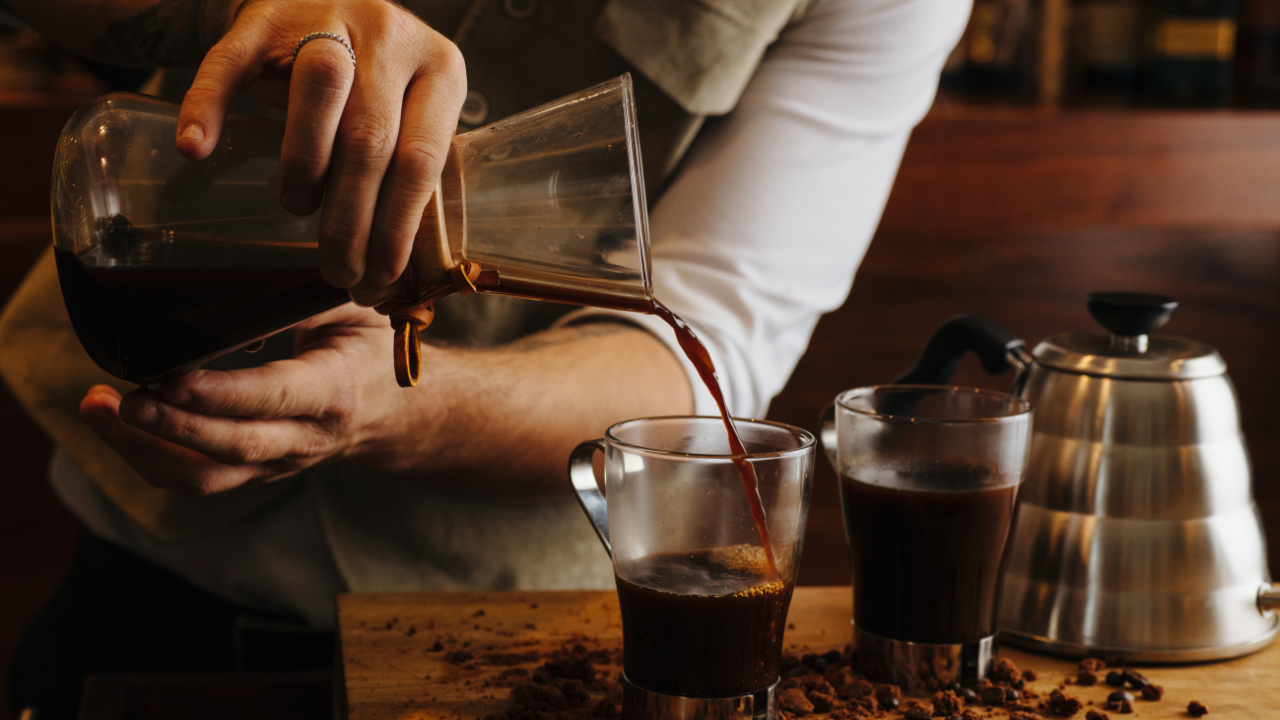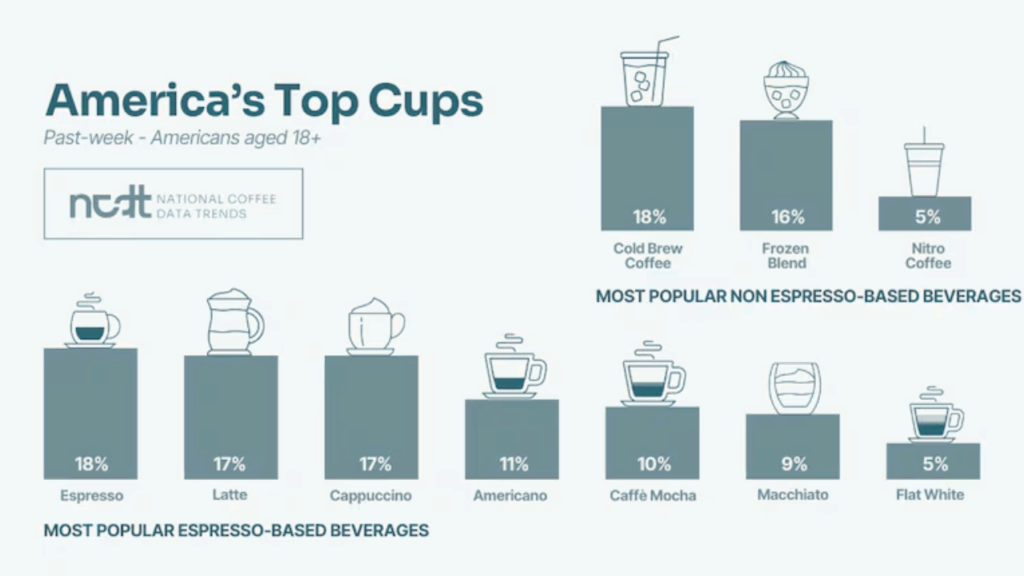US Coffee Trends: Why Americans Keep Turning to Coffee

Summary
Coffee remains the most popular beverage in the U.S., with 66% of adults drinking it daily. Consumption of both traditional and specialty coffees is on the rise, supported by evolving consumer preferences, growing awareness of health benefits, and changing purchase habits. Despite economic concerns and rising prices, coffee continues to play a significant role in both American culture and the national economy.
Coffee has firmly maintained its status as America’s favorite beverage, with 66% of U.S. adults drinking coffee daily, according to the 2025 National Coffee Data Trends (NCDT) report. This makes coffee more popular than tea, juice, soda, or bottled water, and reflects a nearly 7% increase since 2020.

This surge is part of a five-year upward trend. But what’s driving coffee’s ongoing dominance?
“There’s no single reason, but coffee offers the perfect blend of tradition and adaptability,” said William ‘Bill’ Murray, CEO and president of the National Coffee Association. “More consumers are also paying attention to health and wellness, and increasing awareness of coffee’s scientifically backed health benefits may also be fueling its popularity.”
On average, coffee drinkers in the U.S. consume three cups per day.
The Rise of Specialty Coffee
A significant trend is the growing interest in specialty coffee, which includes drinks like cappuccinos, lattes, espressos, and cold brews. In January 2025, 46% of adults reported consuming specialty coffee the previous day, up from 39% in 2020, marking an 18% increase.
- Espresso-based drinks (cappuccinos, lattes, macchiatos, etc.) rose from 24% to 28%.
- Non-espresso-based beverages (nitro coffee, cold brew, etc.) jumped 42%, from 12% to 17%.
Despite this growth, traditional coffee consumption has remained strong, with specialty and traditional coffee maintaining a stable ratio—59% specialty to 41% traditional.
Where and How Americans Get Their Coffee
Most Americans still purchase their coffee from grocery stores, but online shopping has doubled, from 7% in 2020 to 14% in 2025.
Other purchasing channels include:
- Mass merchandisers (e.g., Walmart, Target): 29%
- Club stores: 10%
- Coffee shops: Only 5%
In terms of brewing methods, drip coffee makers remain the most common (62%), followed by:
Single-cup brewers: 42% (up from 40%)
Instant coffee users: 35% (up from 27%)
Bean-to-cup machines: 15% (up from 10%)
Espresso machines: 12% (up from 8%)
Cold brew setups, French press, and pour-over devices are also gaining traction.
Economic Impact and Tariff Concerns
While coffee’s popularity is unwavering, the industry is not immune to global challenges. Coffee prices have soared to all-time highs due to poor harvests, limited supply, and rising supply chain costs. Now, potential tariffs on coffee imports could further increase consumer costs.

Coffee has weathered many trends, but rising prices may begin to test consumers’ limits,” Murray warned. “Though loyalty programs and promotions help, there’s only so far coffee lovers can stretch their dollar.”
Nevertheless, the coffee industry remains a major economic force in the U.S.:
$343.2 billion in total economic impact (2022)
Over $300 million in daily consumer spending
Every $1 in imported coffee generates $43 in economic value within the U.S.
Natural Coffee Innovations: A Growing Niche
As health and sustainability concerns grow, consumers are seeking natural and clean-label coffee products. This shift opens doors for international suppliers committed to quality and innovation.
Nam Viet Group (Vinut), a global beverage manufacturer based in Vietnam, is meeting this demand with naturally flavored and functional beverages that appeal to the wellness-conscious market. With over 40 certified production lines (BRCGS, GMP, FSSC 22000, ISO 14001:2015) and exports to more than 200 countries, Nam Viet is well-positioned to support coffee retailers and brands seeking to offer health-forward alternatives. As the U.S. market evolves, partners like Nam Viet help bridge the gap between tradition and transformation in coffee culture.
